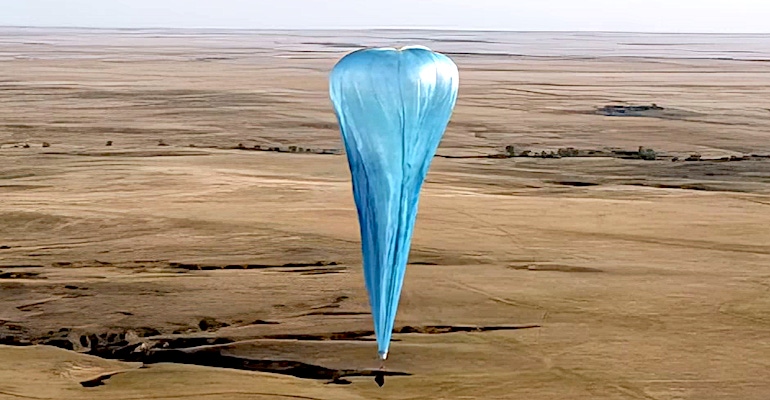Stratospheric Balloons Ascend to Prominence
What goes into making high-altitude balloons like the wayward Chinese observation platform?

Americans have been craning their necks skyward to spot the rogue Chinese observation balloon as it crosses the country.
This causes us to wonder what went wrong that let this gas bag stray over territory where it wasn’t wanted. Design News put a call in to the stratospheric balloon experts at Urban Sky to get some details on just how these balloons are designed and how they work.
The company specializes in delivering broad area, high-resolution aerial imagery, and wildfire monitoring at costs drastically less than satellites, aircraft, or drones. We chatted with Urban Sky co-founder and chief technical officer Jared Leidich, who previously led the team that designed the space suit for the world record StratEx skydive from 136,000 feet.
Design News: What can you tell me about Urban Sky and high-altitude balloons?
Jared Leidich: We design and build our own balloon systems. Ours are almost certainly much smaller than that Chinese balloon. We do mostly remote sensing for things like GIS, aerial maps, and wildfire detection.
DN: What is the science that goes into making these balloons?
Jared Leidich: It is a fairly deep world. The biggest challenge about stratospheric balloons is that it takes a lot of displaced volume to lift a small amount of mass.
DN: So how much does the balloon expand at its operating altitude to achieve the necessary displaced volume?
Jared Leidich: It is heavily dependent on the altitude. At 60,000 feet, they are 11 times bigger than on the ground in Denver at our headquarters. For higher altitudes, it gets much larger. These balloons are not full when they leave the ground. They look like a lollipop when they leave the ground.
What is special about it is getting them to be altitude-stable. Weather balloons just go up, pop, and come back down. A much more useful balloon is one that gets to an altitude and stops ascending. Getting a balloon to do that is really difficult and that is some of the fun engineering.
DN: How do you accomplish that?
Jared Leidich: It is a matter of getting the right balance. We fly zero-pressure balloons and accomplish that with a custom venting system. We overfill the balloon initially with more lift gas than it needs and then we push off that excess lift gas as it rises. When it gets to zero ascent it needs to stop.
DN: How do you make it do that?
Jared Leidich: There are several different ways to do it. We use a bottom-vent passive duct that can push lift gas out the bottom. And the balloon’s shape becomes extremely important so the gas doesn’t have anywhere else to go, but not too much or too little.
DN: So what happened to the Chinese balloon that it didn’t come back down when it should have?
Jared Leidich: No coming back down is a common failure mode for these types of balloons. That’s our guess; something about the termination control system stopped working. From our back-of-the-envelope analysis, it looks like it mostly passively drifting. It doesn’t look like it is trying to control itself. If it has any altitude control capability, it isn’t functioning
DN: How do you avoid having this happen to your balloons?
Jared Leidich: Balloons are surprisingly difficult to get to come down. Throughout our careers, we’ve seen multiple times what it looks like when a balloon termination system fails. We work really hard to not have that happen but it is one of the realities of high-altitude ballooning.
We have three different termination systems. There is an Apex termination system at the top of the balloon where all of the lift gas is allowed to vent. When it comes down, a parachute opens and it lands gently.
DN: These balloons don’t just pop to come back down, so are they made of some special material?
Jared Leidich: In a normal case, the most traditional material is polyethylene that is made in a process-controlled way so it doesn’t have any holes in it. Our Urban Sky balloons’ material is similar to those materials but it is reinforced so it can go through the termination process and descent and then be reused. We have the only reusable stratospheric balloons.
DN: What is this material like?
Jared Leidich: It is Very thin plastic. We buy a material that is reinforced, laminated into the thin plastic. It is not polyethylene. It is proprietary. It is similar to polyethylene.
DN: Thanks for helping inform us about the tech behind these balloons.
Jared Leidich: We’re Helping people understand what is happening with the Chinese balloon. We’re doing a lot of flight modeling to help understand where the balloon is going to go.
About the Author(s)
You May Also Like





